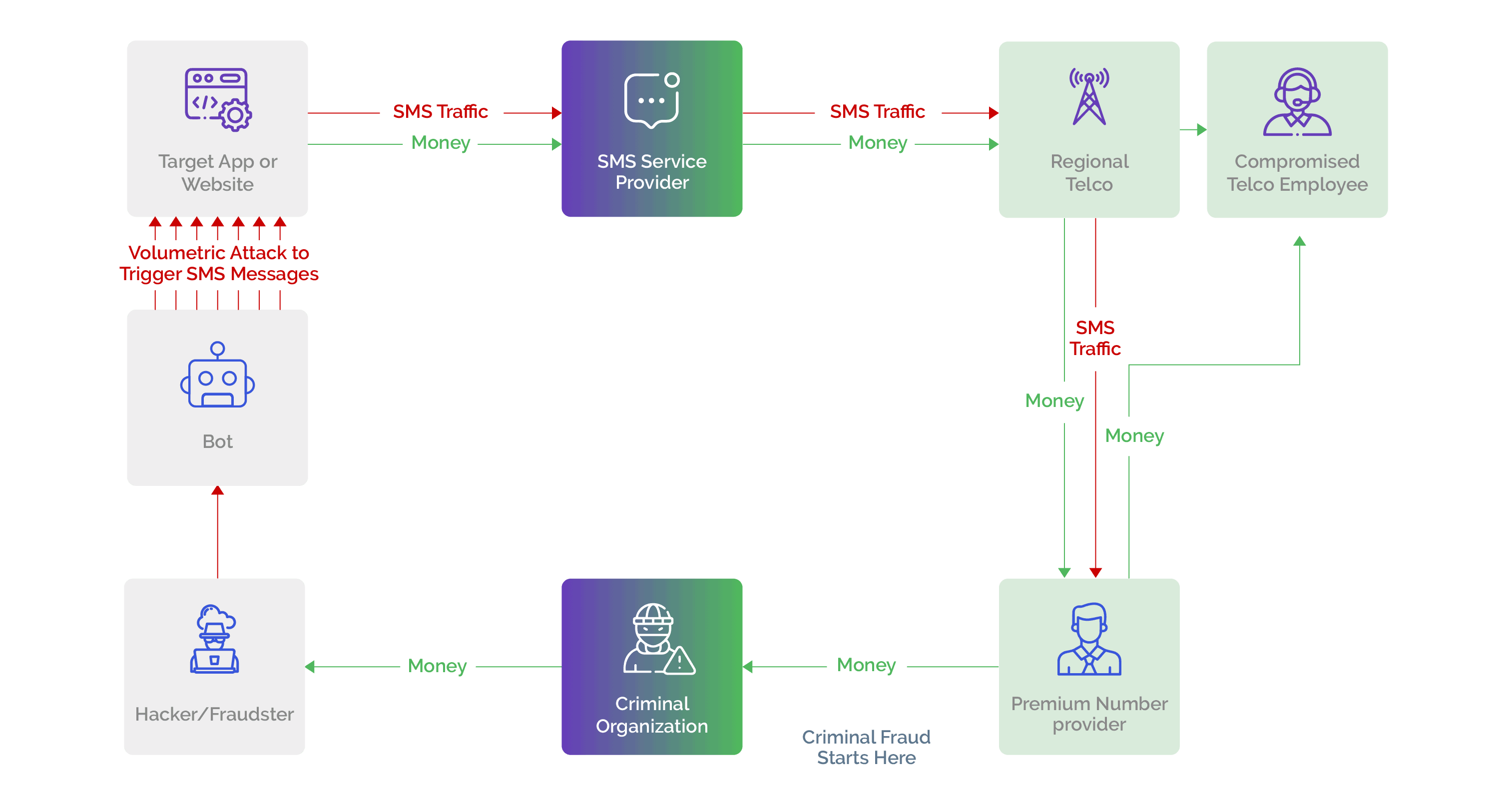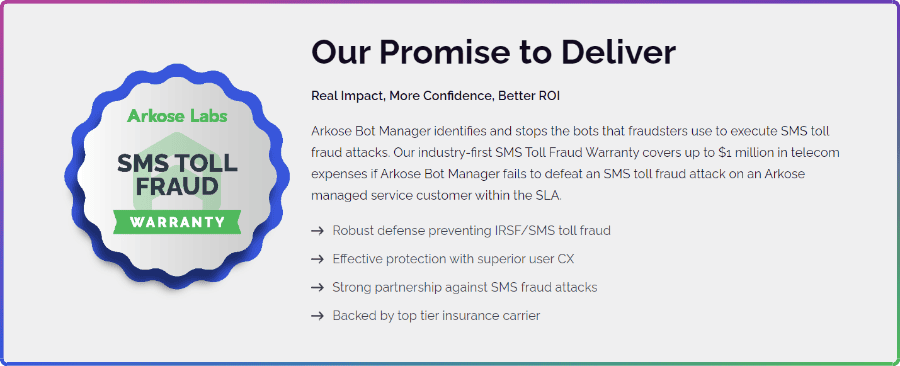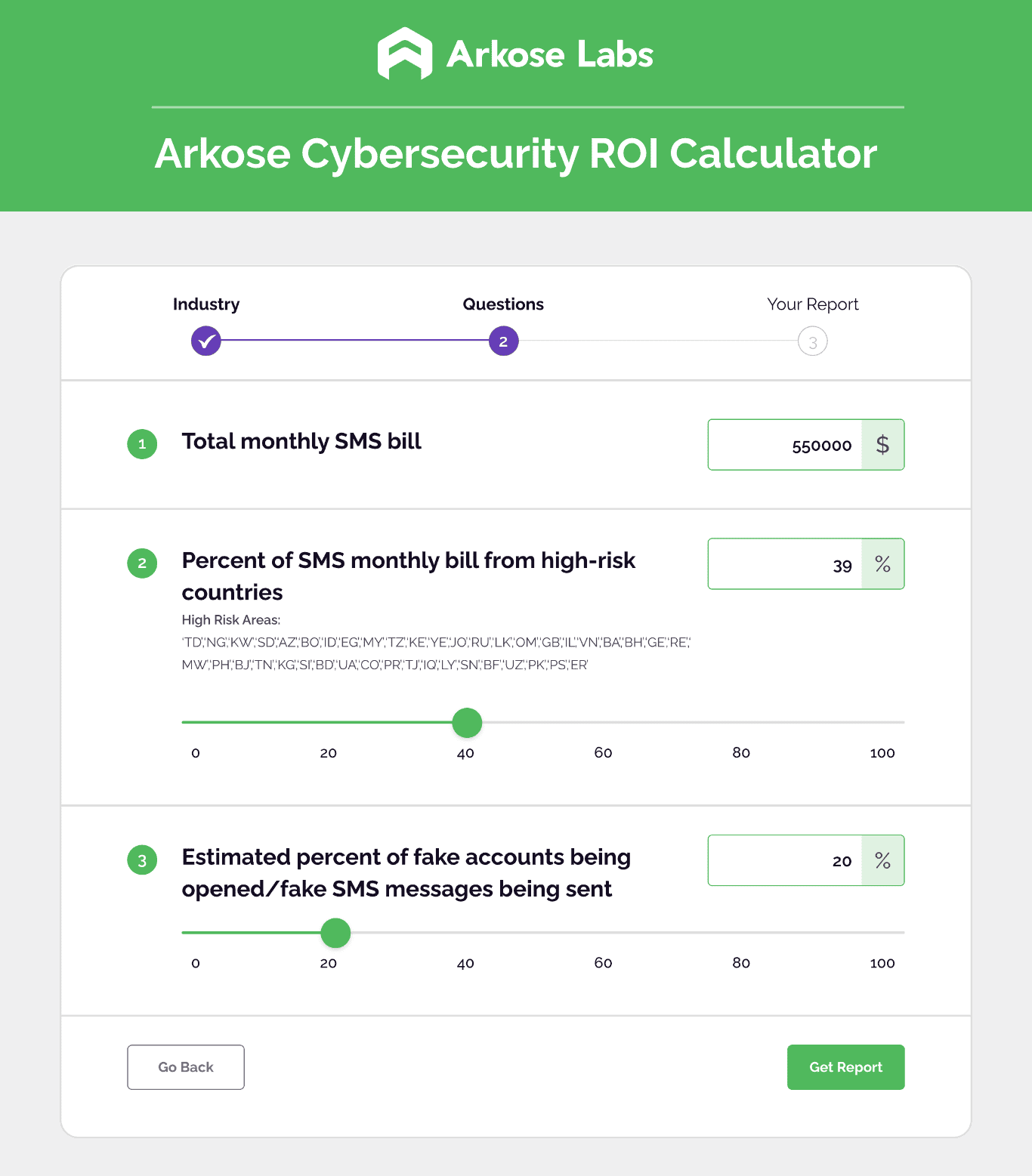Did you know that the biggest cybersecurity threat attacking your business is one your security team probably isn’t seeing – but your CFO is? Toll fraud siphons away resources and sticks you with an unexpectedly hefty telecom bill, yet it often flies under the radar until it’s too late.
Read on to discover what SMS toll fraud is, how it works, and the vital measures you can implement now to detect and protect against this intensifying threat.
What Is Toll Fraud?

Toll fraud is a type of artificially inflated traffic (AIT) attack, where fraudsters create fake accounts at scale, often through the use of bots, that trigger SMS text messages to those accounts via premium-rate numbers, sharing the proceeds with the colluding carriers. Attackers exploit vulnerabilities in the account registration process to carry out this type of fraud, and this unauthorized use of telecommunications services poses significant financial risks for the unsuspecting business. Toll fraud is known by many terms, including SMS toll fraud, SMS pumping fraud, and SMS traffic pumping fraud.
To prevent this artificially inflated traffic, it is crucial for your business to deploy robust security measures, including bot detection and prevention systems. By doing so, you can protect yourself from astonishing financial losses that have escalated in recent years. Implementing best practices and staying vigilant against attackers carrying out premium-rate number scams are essential to safeguarding your business from toll fraud.
The Mechanics of Toll Fraud
Let's dive into the mechanics of an SMS toll fraud scheme. This fraudulent activity can take various forms, but here's a general overview of how toll fraud typically works.
- Identification of Vulnerabilities: Fraudsters identify weaknesses or vulnerabilities in the telecommunications system, such as poorly configured security settings or gaps in the account registration processes.
- Creating Fake Accounts: The perpetrators create fake accounts using various tactics, including automated bots or scripts. These fake accounts may appear legitimate at first glance.
- Utilizing Premium Numbers: Fraudsters gain access to premium-rate or premium-service numbers provided by telecom carriers. These numbers are associated with higher charges for calls or text messages, and a portion of the charges often goes to the carrier.
- Launching Unauthorized Calls or Texts: Once the fake accounts are set up, the attackers initiate a large volume of calls or send SMS text messages to these premium numbers.
- Financial Gain: As a result of the fraudulent calls or texts, the fraudsters receive a portion of the charges incurred. There are typically profit-sharing arrangements between collaborators, such as telecom insiders, premium number service providers, and attackers
- Victim Incurs Costs: The business receives a significantly higher phone bill due to the unauthorized messages sent to the premium numbers. Since the business is unaware of the fraudulent activity, they may pay the inflated bill without realizing they've been scammed.
- Reputation and Operational Impact: For businesses, the financial impact is just one aspect of toll fraud. The disruption caused by unexpected charges and potential service interruptions can also harm a company's reputation and day-to-day operations.
Impact of Toll Fraud on Businesses
Toll fraud can have significant financial implications for businesses, resulting in unexpected and excessive phone bills. This can disrupt normal operations and cause reputational harm. Worse still, this burden may be shifted onto consumers, a ripple effect that touches everyone who purchases your goods and services.
The key to beating back SMS toll fraud lies in proactive action and the implementation of strategic defenses. By fortifying your organization with preventive measures and embracing tried-and-true best practices, you erect a shield against the onslaught of SMS fraud's devastating impact.
Identifying Signs of Potential Toll Fraud Attacks
Unexpected spikes in online registrations from high-risk countries can raise suspicions of potential SMS traffic pumping fraud. But oftentimes, this data gets overlooked. The treacherous nature of SMS toll fraud lies in the assumption that an increased bill signifies a functioning registration process. Establishing a feedback loop becomes paramount for your business, distinguishing genuine surges from suspicious patterns like an unexpected influx of registrations from high-risk regions.
Leveraging anomaly detection tools can help identify unusual call destinations or patterns associated with AIT fraud. Regularly monitoring and analyzing call logs are crucial in detecting and preventing toll fraud attacks. By staying vigilant and recognizing these signs, your business can take proactive measures to protect itself from the financial and operational consequences of toll fraud. Implementing best practices and leveraging technology can safeguard sensitive information and ensure a secure telecommunication environment.
How Do Fraudsters Register Fake Accounts?
Scammers employ various tactics to register fake accounts, such as creating fictitious identities with fake emails and passwords. They exploit vulnerabilities in the registration process and may utilize automated systems or bots to generate a large number – in the millions – of fake accounts quickly. Robust authentication and verification processes are crucial in preventing the registration of these fraudulent accounts.
How do Businesses Fall Prey to SMS Toll Fraud?
Businesses can become victims of toll fraud because of factors like outdated website registration systems and insufficient call data monitoring. But one of the weakest links in the security chain is when a business is unable to reliably detect bogus account sign-ups and malicious logins.
By eliminating the persistent attacks on user touch points that trigger OTP verifications, your business can fortify your defenses against this expensive scam.
The Role of Telecom Providers in Toll Fraud
In the battle against toll fraud, your business stands as a formidable frontline. Telecom providers, much like crucial allies in a grand strategy, can't single-handedly thwart and mitigate toll fraud, but their role is pivotal. By implementing stringent security measures, they can protect their infrastructure from unauthorized access.
Therefore, sharing information and insights with your telecom providers can enhance the collective effort against toll fraud. Regular monitoring and analysis of network traffic can allow telecom providers to detect and respond to toll fraud incidents promptly. By taking these proactive measures, telecom providers can align their forces with your business to decisively vanquish the toll fraud threat.
How Does Premium Number Scam Work?
Premium number scams operate by fraudsters creating premium-rate numbers and registering fraudulent accounts. Each call to these premium services numbers incurs a high charge, with a portion of the revenue going to the scammer. Techniques like SMS pumping may be employed to increase call volume. Raising awareness and implementing internal feedback loops can help prevent falling victim to this type of fraud.
Understanding the Profit Sharing Between Fraudsters and Telecom Providers
In many instances of toll fraud, a profit-sharing agreement exists between attackers and telecom providers. These providers receive a share of the revenue generated from fraudulent calls or SMS messages. This unethical practice creates an incentive for fraudsters to engage in toll fraud and presents a significant challenge in combating it effectively.
To address this issue, regulatory bodies and industry collaborations must play a key role in enforcing stricter guidelines and penalties for telecom providers involved in such activities. By eliminating profit-sharing schemes, it becomes possible to deter fraudsters and safeguard businesses and individuals from the detrimental effects of toll fraud.
What Are the Preventive Measures Against Toll Fraud?
To prevent toll fraud, businesses should implement robust systems to detect and prevent bot and human fraud farms. These systems can help identify artificially inflated traffic fraud and take proactive measures to safeguard against potential toll fraud attacks.
Technologies to Detect and Prevent Bots
To effectively detect and prevent toll fraud, businesses can utilize advanced bot detection software, which helps in stopping fake account registrations.
The Arkose Bot Manager platform scrutinizes intent and behavior to detect signs of malicious activity. For activities that carry heightened risk, interactive MatchKey challenges come into play. This method adopts a nuanced strategy, allowing legitimate human actions to proceed without impediment, while imposing formidable obstacles against large-scale fraudulent registration attempts. Through its adaptive and strategic challenges, Arkose Labs maintains a steadfast guard, neutralizing automated threats and rendering SMS toll fraud endeavors unproductive. This advanced defense mechanism offers a reliable barrier against the intrusion of automated actors.

Along with implementing a bot mitigation platform, your business can lower the risk of a successful SMS toll fraud attack by:
- Monitoring call records and analyzing usage patterns for any unusual activity or sudden increase in premium-rate number calls
- Conducting periodic audits of SMS usage, bills, and accounts to detect and rectify any discrepancies or unauthorized activities
- Working closely with mobile network operators to implement safeguards against toll fraud
By incorporating these technologies and practices, your business can minimize the risk of falling victim to toll fraud and protect yourself from potential financial losses. Remember, staying proactive is key to maintaining a secure environment.
Steps to Take After Suspecting Toll Fraud in Your Business
Think your organization may be a victim of toll fraud? Immediately take action to prevent further fraudulent activity by disabling any compromised accounts or devices. Contact your telecom service provider to report the suspected toll fraud incident. Preserve call records, SMS messages, and any other evidence for investigation purposes.
It's important to report the incident to the appropriate authorities, such as law enforcement or regulatory bodies. In order to prevent future toll fraud incidents, conduct a thorough review of your security measures and make necessary improvements. Stay proactive in implementing best practices and staying updated on the latest toll fraud prevention techniques.
Fortifying Your Defenses
In summary, toll fraud is a formidable peril that can lead to significant financial losses. It demands vigilant attention, starting with implementing technologies that can spot the early warning signs of an attack and stop it in its tracks.
Don't wait until it's too late – take proactive steps to ensure that your business is protected. Learn more about how Arkose Labs can help you safeguard your business from toll fraud.


